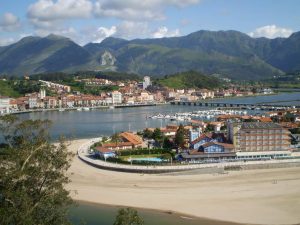
Staying connected while walking the Camino de Santiago can make the difference between a smooth experience and moments of uncertainty. Although many see it as a journey of disconnection, having the right technology will allow you to stay in touch with family, check maps, or even book last-minute accommodation.
If you’re wondering what to bring or how to prepare, this guide provides the answers you need to enjoy your adventure without completely disconnecting from the digital world.
Índice de contenidos
The importance of staying connected on the Camino de Santiago
Being connected during the Camino de Santiago is not only practical but can also be essential to ensure a safe and organised experience.
While many people aim to disconnect from daily life, having the right technology allows you to quickly handle any unexpected situations. From checking the weather forecast to looking up travel solutions for the Camino de Santiago, internet access can be crucial.
Furthermore, connectivity enhances navigation, using apps to help you find your way without solely relying on physical signs. Additionally, if you plan to communicate with other pilgrims or family, a good connection helps maintain contact at any time.
Finally, in case of emergencies, having internet access can be vital to request help or receive up-to-date information.
Internet connectivity along the different stages of the Camino
Connectivity varies along the different stages of the Camino de Santiago, depending on the route you choose.
- If you choose the historical Camino Primitivo Trail, you’ll encounter mountainous and rural areas where the internet signal can be intermittent. However, in larger towns, like Grandas de Salime or Lugo, it’s easier to find Wi-Fi connectivity.
- For those taking the Camino to Finisterre and Muxía, you’ll notice better coverage in the sections closer to the coast, especially in tourist areas and hostels.
- Similarly, on the coastal route from Ferrol to Santiago, the signal tends to be more stable due to the proximity to urban areas.
- On the Camino Inglés route to Santiago, most accommodations and bars offer free Wi-Fi. However, mobile coverage may be more limited in some rural sections.
- On the Camino Francés route from O Cebreiro, connectivity is usually better. You’ll find numerous options for internet access in hostels and establishments along the route.
Essential devices for the Camino: Must-haves

When setting out on your pilgrimage on the Camino de Santiago, it’s essential to bring the right devices to stay connected and safe.
Of course, a good mobile phone is essential, not only for communication but also to access maps, useful apps, and keep updated on the weather or any changes to your itinerary. Make sure your device has a good battery, and consider bringing a portable battery, as charging options may be limited in some stages.
Another useful device is a GPS-enabled smartwatch. These gadgets not only help you stay on track but also monitor your physical activity, which is helpful on such a demanding journey.
A portable router can also be very useful if you want internet access in more remote areas or are travelling with others. This way, you can share the connection without relying on mobile coverage, which can be unreliable in some spots.
Lastly, consider bringing wireless headphones for longer walks or simply to enjoy music while you journey along the trails.
How to optimise mobile data usage: Stay connected efficiently
If you want to stay connected throughout the Camino de Santiago without overusing mobile data, there are several strategies to help you optimise usage.
One of the most effective is to download maps and guides offline before setting off. Apps like Google Maps and Maps.me allow you to save routes and use them offline, which is especially helpful in areas with low coverage.
Additionally, connect to Wi-Fi whenever possible, such as in hostels, bars, or towns where it’s available. This way, you can update your apps, upload photos, or communicate with your loved ones without using up your data.
Also, consider using data-saving modes available on most smartphones, which limit background app usage. For streaming services, downloading playlists or episodes in advance will help you conserve data as well.
Travel safely while staying connected
It’s essential to prioritise safety when it comes to using technology along the Camino de Santiago. Protect your devices with strong passwords and, if possible, activate two-step verification on your accounts to safeguard against theft or loss.
Additionally, back up your essential information to the cloud, such as travel photos, identification documents, and health insurance, so you can access them at any time from another device.
With the right technology, you’ll be able to stay connected, safe, and informed without losing the essence of the Camino de Santiago. Happy travels!









